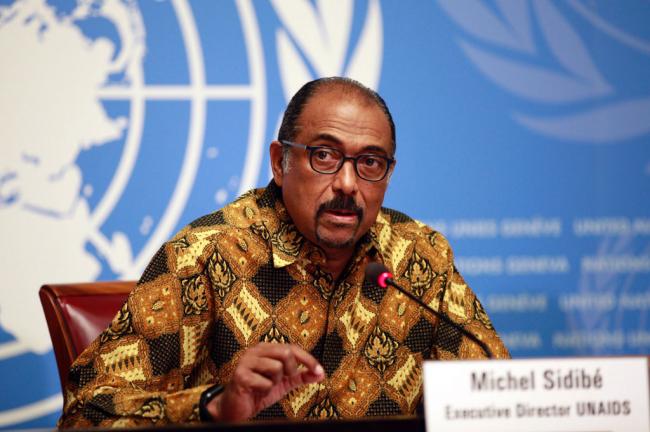
Warning of stalled progress against HIV infections, new UN report urges stepped-up prevention efforts
The Joint UN Programme on HIV/AIDS (UNAIDS) Prevention Gap Report reveals that an estimated 1.9 million adults have become infected with HIV every year for at least the past five years and that new HIV infections among adults are rising in some regions.
“We are sounding the alarm,” said UNAIDS Executive Director Michel Sidibé at a press conference in Geneva launching the report. “The power of prevention is not being realized. If there is a resurgence in new HIV infections now, the epidemic will become impossible to control. The world needs to take urgent and immediate action to close the prevention gap.”
The report notes that in Eastern Europe and Central Asia, annual new HIV infections increased 57 per cent from 2010 to 2015. After years of steady decline, the Caribbean saw a nine per cent rise among adults. In the Middle East and North Africa, annual new HIV infections increased by four per cent.
There have been no significant declines in any other regions of the world. New HIV infections declined only marginally in Western and Central Europe and North America as, well as Western and Central Africa since 2010.
Since the start of the AIDS epidemic 35 years ago, 35 million people have died from AIDS-related illnesses and an estimated 78 million people have become infected with HIV. New HIV infections among children have declined by more than 70 per cent since 2001, and are continuing to decline.
Key populations’ access to prevention options
In 2014, key populations, including gay men and other men who have sex with men, sex workers and their clients, transgender people, people who inject drugs and prisoners, accounted for 35 per cent of new HIV infections globally.
It is estimated that men who have sex with men are 24 times more likely to become infected with HIV than the general population, while sex workers are 10 times more likely and people who inject drugs are 24 times more likely to become infected than the general population.
In addition, transgender people are 49 times more likely to be living with HIV and prisoners are five times more likely to be living with HIV than adults in the general population.
It is essential for key populations to have access to the full range of HIV prevention options in order to protect themselves and their sexual partners from HIV.
“On Wednesday, we have multiple prevention options,” said Mr Sidibé. “The issue is access – if people do not feel safe or have the means to access combination HIV prevention services, we will not end this epidemic.”
The report highlights that the major hopes for antiretroviral therapy to have an impact on preventing new HIV infections are starting to be realized, although the full benefits may not be seen for some years.
HIV prevention funding gap
International donor contributions dropped from a peak of $9.7 billion in 2013 to $8.1 billion in 2015. Low- and middle-income countries are stepping up to fill the gap, with domestic resources accounting for 57 per cent of the $19.2 billion total funding in 2015.
In June 2016, the United States announced the launch of a new $100 million Key Populations Investment Fund to increase access to HIV services for key populations.
The current allocation of resources for HIV prevention is falling far short of what is needed. Currently, 20 per cent of global resources for HIV are being spent on HIV prevention.
Closing the HIV prevention gap
“Science, innovation and research have provided new and effective HIV prevention options, rapid diagnostics and improved treatment for HIV,” said Sidibé. “Investing in innovation is the only way to secure the next big breakthrough – a cure or a vaccine.”
The data in the report, collected from more than 160 countries, demonstrate that enormous gains can be achieved when concerted efforts are made. It outlines that by 2015, some 17 million people had access to antiretroviral therapy, double the number in 2010 and 22 times the number in 2000.
UNAIDS will be calling on implementers, innovators, communities, scientists, donors and others at the 2016 International AIDS Conference, taking place from 18 to 22 July, in Durban, South Africa, to close the prevention gap.
Photo: UNAIDS
Source: www.justearthnews.com
Support Our Journalism
We cannot do without you.. your contribution supports unbiased journalism
IBNS is not driven by any ism- not wokeism, not racism, not skewed secularism, not hyper right-wing or left liberal ideals, nor by any hardline religious beliefs or hyper nationalism. We want to serve you good old objective news, as they are. We do not judge or preach. We let people decide for themselves. We only try to present factual and well-sourced news.







